DONCASTER-SHEFFIELD AIRPORT
A speech delivered by Mayor Oliver Coppard given to South Yorkshire business leaders on Tuesday 26th August, 2025
A few weeks ago I was invited onto the ‘Save DSA podcast’ by Mark Chadwick, who you will all know, and who’s here in the audience today, the most famous man in the room.
Mark’s first question was about where I was when I heard the news about DSA being put into a ‘strategic review’ by the owners, Peel, in 2022.
For the record, I was in the office, which probably wasn’t as dramatic as Mark was hoping for.
But while my story may not have been very dramatic, the impact of that announcement certainly was, right from the outset.
It was immediately obvious that the decision by the owners would not go unnoticed, or unchallenged. In fact, there was huge interest: locally, nationally and internationally. And huge concern from people right across South Yorkshire, as well as further afield.
Airports, I quickly came to understand, are not just transport hubs, gateways to international travel, or simply valued for their ability to create jobs or generate wealth.
Airports generate an unusual degree of attachment, local pride, and even hope.
For the people who worked there, I know DSA felt like a family. For those who relied on the airport as a base for their own businesses, there was suddenly a scramble to imagine a new future. For those who used the airport regularly, the threat of its closure meant a new degree of uncertainty and inconvenience.
But I think the immediate response was about more than uncertainty or inconvenience.
There is something about airports that generates a sense of optimism and opportunity, something about air travel that still seems almost impossible.
Despite the very real challenges of climate breakdown, and the rise and regularity of low-cost air-travel, I think, there remains something special about getting on a plane.
I don’t claim to fully understand it. Perhaps it is something to do with the improbability of a huge chunk of metal and technology seemingly defying gravity, perhaps it’s simply the promise of adventure, or just a pina colada on the beach in a foreign country, but whatever it is, I know it was tangible in those first few days and weeks after the announcement of that strategic review.
There was an outpouring of not just anger or disbelief, and a very real and significant sense of loss. In hindsight, perhaps it was something closer to grief. But there was also an outpouring of genuine enthusiasm for DSA, and what it means to people across our communities and beyond.
And an almost universal demand that it be kept open.
That came through clearly, and immediately: online, in-person, in writing and over the phone, and at the public meetings I organised in the aftermath of the announcement. People wanted to save DSA. Specifically, in the face of indifference from the government at the time, they wanted local action, from local leaders, to step-in and save DSA.
There has been no shortage of commentary in the weeks, months and years since those first few days, about my commitment to first saving and then reopening our airport.
So for posterity if nothing else, let me be crystal clear. I have always wanted our airport to thrive; to act as a gateway to South Yorkshire, a magnet for investment and a central driver of opportunity for our whole community.
My commitment to that goal has never been simply an empty promise.
Throughout the process that has led us to today, I have matched ambition with action.
At this point, I think it’s perhaps worth listing the work that has been put in with partners to save DSA; to make real my commitment to this project.
- Just days after the news about Peel’s decision I was the first – and only – person to organise public meetings to bring together our communities behind the goal of saving DSA.
- I instructed my team at the MCA to negotiate with Peel, and negotiated myself, with a view to brokering a deal to either save or sell our airport.
- For months, I chaired weekly meetings, bringing together the City of Doncaster Council and our MPs, to coordinate our response.
- I asked the government to use the Civil Contingencies Act as a mechanism to keep DSA open. I even tracked down the Aviation-Minister at the Tory Party Conference in Birmingham, and made our case in person.
- I authorised an offer of £7 million to Peel; an offer designed to keep DSA open for an additional 12 months past the putative closing date, in the hope we could try to negotiate a sale while the airport remained open and operational.
- I lobbied the government to designate DSA and Gateway East as part of the UK’s first Investment Zone, offering us the opportunity to use Business Rate Retention to invest in the future of the project.
And since it was closed in November 2022…
- I’ve already committed £16m to the process of reopening DSA.
- I’ve brokered an additional £30 million investment from government, and personally secured the support of the Chancellor for our plans to reopen our airport. I brought the PM and the Deputy PM to Doncaster, who have both been vocal in their support too.
- I’ve established a working group with government, to explore any and all opportunities for further investment in the wider project, from defence contracts to sustainable aviation research.
- And I’ve commissioned one of the most in-depth business case assessments the MCA has ever undertaken, so we can truly understand the risks, the benefits, the opportunities inherent in reopening DSA; giving us a robust analysis of what the pathway to success looks like.
I stand by all of the work I’ve done to keep or re-establish our airport in South Yorkshire. But I know some people have criticised me, the MCA and local leaders for both the pace and the manner in which we have approached that challenge.
So in explaining my approach, and with due respect to Mark and his questions on the podcast, when I think about my leadership and approach to the challenge of saving DSA, what’s perhaps more interesting than where I was when I heard the news about the closure of our airport, was how I felt. What I was thinking. Not just over those first few days and weeks but since the beginning of that journey to today.
Because I have been driven by two very clear, yet potentially competing imperatives; to respond to the demand to save DSA and to exploit the huge opportunity that this project represents, to do the very thing I committed to doing when I first stood for election in 2022; to restore the pride, purpose and the prosperity of South Yorkshire.
But also, to protect the interests of taxpayers across South Yorkshire; to use the finite public money at my disposal to best meet the needs of communities across Barnsley, Rotherham, Sheffield and of course Doncaster.
Because on a very fundamental level, I know this audience will understand better than most. My job is to maximise the value of the investments we make; to create the greatest impact with the limited funding we have to shape the future of South Yorkshire.
That tension has been and remains at the heart of the challenge we have faced from day one, and continue to face today; how do we save DSA, but do so from a standing start, in a way that truly recognises the challenges of sustaining, and growing, a regional airport over the medium to long-term, with finite funding, resources and capacity?
I think it’s fair to say not everybody has always recognised the scale of that challenge, and perhaps we haven’t always done a good job of explaining it.
We have not always explained the relatively limited capacity we have in the MCA or in Doncaster to take on projects of this size, type and scale.
We have not always explained that the rules governing our funding mean we often have limited flexibility or scope to do things that may look straight forward from the outside, of course, and that every significant funding decision we take is subject to a huge amount of scrutiny, legal process and governance. Quite rightly.
We have not always explained the very many complexities of reopening an airport, from procuring fire engines and negotiating with airlines, to hiring and training air traffic controllers and taking on new security arrangements.
And we have not always explained the unique nature of this particular challenge; that there is no playbook for us to draw on, no template for us to use. I know some people will point to Teeside Airport, but their airport has only ever been a little over a quarter of the size of ours. Others will point to Manchester Airport Group, which is a monster compared to DSA.
Because in the rush to explain what we wanted to do – Save DSA – we have not always been as forthright as we could have been at explaining how we are taking on that challenge.
And that lack of communication has, I know, specifically led to a charge that I may not be completely committed to reopening DSA, or that I am taking too long to complete a process that is little more than a rehash of work that has already been done.
So I want to take this opportunity to talk a little about the work we have been doing, at the MCA and alongside our partners at Doncaster Council, to work out whether we can reopen DSA and create a world leading sustainable aviation hub and advanced manufacturing hub at Gateway East. To talk about what we know now that we did not know before, about the risks and opportunities we have uncovered, and what the pathway to success might look like.
Because that work, led by my team, and supported by colleagues in Doncaster, in government, and from the private sector, has been nothing short of vital.
Firstly, let me take on the charge that we have taken too long to get to this point, and are simply engaged in a duplication of work that has already been done; that in the words of a small number of people on social media, certainly not on Mark’s page, we should just get on with it’.
Friends in this room will know that the reopening of DSA and the development of the wider South Yorkshire Airport City project initially attracted significant attention and interest from the private sector. We had initially hoped that a private sector operator would take on the work of financing and reopening DSA.
But we were simply not prepared to sign that deal no matter the cost, or no matter the longer-term implications of a deal that did not offer the communities of South Yorkshire a share of the benefits that was equal or greater to the share of the risk we would also have been taking on.
So we have taken on that challenge ourselves; City of Doncaster Council, the MCA and now with support from the government.
But that material change has required us to undertake a new and deeper level of analysis, to satisfy the very significant demands of using public funding for a project of this nature and this scale.
I have made, and will make, no apology for that approach; for doing the proper due diligence when being asked to potentially spend in excess of £150 million of public money, to make real a project that has the potential to be either a huge economic driver, or a significant drain on public funds.
Whatever work we do now, there can of course be no guarantees either way. And yet the greater the scrutiny, the expertise and the work we can bring to bear now, the greater the likelihood of getting that decision right.
An unprecedented challenge requires an unprecedented approach.
That is why we have commissioned one of the most comprehensive business case analyses in the history of the MCA.
Over the last year we have worked to develop a comprehensive assurance review and funding decision analysis; one that highlights the strategic alignment, financial risks, opportunities and governance questions we need to consider before taking any final funding decision.
That work has included: risk assessments and reviews of our own assurance processes, independent analysis of aviation forecasts, including commercial passenger and freight targets, programme planning, an ongoing review of the lease arrangements with the landowners, Gateway East master-planning, that offers a greater understanding of the infrastructure and investment needed to create a world leading sustainable aviation hub as part of the South Yorkshire Airport City project, a new analysis of the cost-to-benefit ratio of the project, a climate and sustainability impact assessment, skills and employment considerations so we can make sure local people can access the opportunities we want to create, and more.
And we have undertaken that work at pace.
To have gone from the closure of our airport in November 2022, to a position where we now have moved this project forward to this point, and to have almost completed investment-grade due diligence with nearly 1,000 pages of analysis, is – in my opinion – if not extraordinary, then certainly notable.
The public sector is often criticised for not operating commercially; for taking decisions based on politics and ideology, or political expediency, maybe simply to win an election, rather than a hard-headed analysis of the facts, and data.
I am not here to make the case that the MCA is now acting like a business. I do have a different set of conditions and outcomes that I must take into account when making decisions. I am not simply here to make a profit for the MCA or South Yorkshire. My job is often to take a longer-term, more strategic approach, and sometimes to invest public money to create the conditions for growth, rather than a direct return on investment. To create opportunity for people right across South Yorkshire. But just like the decision made by any business or public sector body, that can never be at any cost.
Of course the public and private sector have different measures of success, but in this case I think it is right to say we are doing a level of analysis that every business in this room would expect when approaching a deal of this scale, if not more.
Because as I have said many, many times already, when engaging in a project this big and this important to so many people, failing to prepare is tantamount to preparing to fail; ‘act in haste, repent in leisure’.
The best possible way for me to give DSA, Doncaster and South Yorkshire the future we want, and the future we deserve, is to do everything we can to understand what this project will need if it’s going to be a success, and whether we think we have the resources, the conditions, the tools and the ability to make that vision a reality.
The work we are doing will give us an unprecedented understanding of what it will take to reopen DSA and create a world leading sustainable aviation hub and advanced manufacturing hub at Gateway East, as well as the risks and opportunities inherent in that project.
We now know, that if we do proceed, we must be prepared to invest for the long-term, and we know what the funding profile might look like over that period.
We now know that while opening an airport is not a binary process, we’re now unlikely to be at full operational capacity until 2028.
As a result we would be unlikely to see commercial passenger flights into or out of DSA before 2028. Albeit, we will of course aim for that to happen sooner.
We now know the commercial aviation and passenger forecasts have the potential to make or break this project, and that at the lower end, those forecasts do have the potential to undermine the viability of DSA.
But we also know now that the wider South Yorkshire Airport City project will not, cannot, solely be focused on providing low-cost holiday flights. There is no future for a regional airport in South Yorkshire with a business model solely concerned with commercial passenger flights.
We now know that if we are able to realise our ambitions of a world leading sustainable aviation hub at Gateway East, the funds from business rate retention would offset a huge proportion of the costs of reopening DSA.
We now know that the cost benefit ratio of reopening DSA may be lower than we initially understood, but with the right conditions the project could still provide a strong economic and social benefit to South Yorkshire, and a decent return to taxpayers over the long-term.
And we now know that all of that work, and the insights it has provided, has materially impacted the ongoing conversations about the lease.
So that work has been significant, and will be invaluable in making the decision about funding. I have always said there are significant risks to reopening DSA, but now we know what the vast majority of those risks might look like.
And while the work we have done to understand the risks, challenges and opportunities inherent in the DSA project has been vital, it’s also fair to say that, from day one the decision to pursue this project – the reopening of DSA and the development of the wider South Yorkshire Airport City masterplan – may be governed by numbers on a page, there are of course other questions we need to answer too; questions driven by the huge desire to see DSA reopened, and what it means to people across our communities. Not least in the room.
For me, that’s at the heart of my role as Mayor, and devolution itself. Through devolution, I am here to balance the need to listen to people, and do my very best to make real their hopes and ambitions, but also to understand the opportunity cost of spending over £150 million of our funding, over and above any other project or programme in Doncaster we may wish to fund in future.
To be clear, without devolution, a Mayor or a Mayoral Combined Authority, the funding, responsibility and impetus for this project would have remained with central government. So that decision is now ours to take.
At this point I still cannot say we will be reopening DSA and creating that world leading sustainable aviation hub at Gateway East. There are still challenges to overcome.
There have been and always will be decent people arguing in good faith that we should not reopen DSA. While I disagree, I have never been immune to those arguments.
So, I cannot prejudge the decision we will be taking as an MCA Board. Not least as that work is still going on. The money we have to spend on this project is not – indeed never has been – unlimited.
But I can say that if we are not able to take a positive decision to fund the reopening of our airport, it will not be for a lack of work, a lack of political will or a lack of analysis and insight.
What I can promise, absolutely, is that by the time we take the final decision, we will have done everything we can to take the best possible decision for the future, for all of the communities of South Yorkshire, that I will remain transparent and accountable, and that whatever that final decision, I will be able to stand in front of you and in good faith, hand on heart, say that I have done everything I can to take the right decision on behalf of South Yorkshire, and to save DSA.
Thank you.



